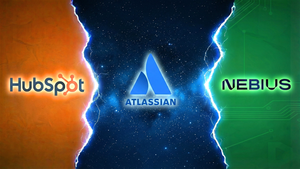
The technology sector, particularly investments related to artificial intelligence, has been a significant growth driver in global markets. However, a palpable shift in investor sentiment is now casting a shadow over the soaring valuations of AI stocks. On November 4, 2025, this skepticism manifested dramatically as Palantir Technologies (NYSE: PLTR) experienced a sharp drop in its shares, despite reporting exceptionally strong third-quarter earnings. This immediate reaction signals a growing concern among investors regarding the sustainability of current tech valuations. Concurrently, profit-taking activities led to noticeable dips across several prominent Asian technology stocks, further underscoring a broader market re-evaluation of the high-flying tech segment.
This widespread re-assessment highlights a critical juncture for the financial markets, as the euphoria surrounding AI innovation confronts the hard realities of valuation metrics and economic uncertainties. The recent events suggest that investors are becoming increasingly discerning, prioritizing tangible value and sustainable growth over speculative potential. This trend could herald a more cautious investment landscape, potentially redefining the trajectory for countless public companies operating within the rapidly evolving technology and AI ecosystems.
Valuation Scrutiny Takes Center Stage Amidst Strong Earnings
The week of November 4, 2025, saw significant turbulence for technology stocks, spearheaded by Palantir Technologies' unexpected stock dip. On November 3, after the close of U.S. markets, Palantir announced its Q3 2025 financial results, which were nothing short of stellar. The data analytics software giant reported revenue of $1.18 billion, a robust 63% year-over-year increase, significantly beating analyst estimates. Adjusted earnings per share soared to $0.21, far exceeding the forecasted $0.17. CEO Alex Karp lauded the quarter as "otherworldly," attributing the exceptional performance to the accelerating adoption of Palantir's Artificial Intelligence Platform (AIP) and raising full-year revenue guidance.
Despite these "blowout" numbers, Palantir's stock tumbled by approximately 8% on November 4, a phenomenon becoming increasingly common in the current AI-driven market. The primary driver behind this downturn was pervasive investor concern over the company's "extreme" valuation. Trading at around 288 times forward earnings and with a price-to-earnings-to-growth (PEG) ratio of 8.1, many analysts, including those from Jefferies, William Blair, and UBS, deemed its valuation unsustainable relative to its fundamentals. The stock's meteoric rise—over 150% year-to-date—also triggered significant profit-taking, as investors capitalized on their gains, believing the stock had limited upside at its elevated levels. Adding to the caution, a regulatory filing revealed that "Big Short" investor Michael Burry had taken bearish positions on 5 million Palantir shares shortly before the earnings release.
The ripple effect of valuation concerns was also evident across Asian markets. On November 4, major benchmarks like Japan's Nikkei 225 (dipping 1.7%), South Korea's Kospi (down 2.4%), and Hong Kong's Hang Seng (falling 0.6% to 1.4%) all experienced declines. This came after periods of strong rallies, particularly in AI and cloud technology-driven stocks. Key players like Samsung Electronics (KRX: 005930) and SK Hynix (KRX: 000660) in South Korea plunged by 5.6% and 5.5% respectively, primarily due to aggressive profit-taking. Similarly, Japan's SoftBank Group (TYO: 9984) and chip-testing equipment maker Advantest (TYO: 6857) saw significant retreats. Beyond profit-taking, renewed U.S.-China tech tensions, including concerns over U.S. restrictions on advanced AI chip sales to China, and broader global economic uncertainties, contributed to the cautious sentiment.
Navigating the Volatility: Winners and Losers in a Re-evaluated Market
The intensified scrutiny on AI and technology stock valuations is creating a clear bifurcation in the market, distinguishing companies with robust fundamentals and clear monetization strategies from those built primarily on speculative future growth. Companies poised to lose in this environment are predominantly those whose valuations have soared on the promise of AI without a corresponding track record of sustainable profitability or diversified income streams. Palantir Technologies (NYSE: PLTR), despite its strong earnings, exemplifies this vulnerability, with its stock experiencing a significant drop due to an "extreme" valuation of over 90 times forward earnings and 25 times forward sales. Similarly, generative AI platforms with high burn rates, such as OpenAI's ChatGPT, which reported substantial losses despite significant revenue in the first half of 2025, face fundamental business model challenges if they cannot demonstrate a clearer path to profitability. Smaller, more speculative AI startups will also likely find it increasingly challenging to secure funding at previously inflated valuations, potentially leading to consolidation or a slowdown in innovation.
Conversely, companies with proven profitability and those effectively integrating AI to enhance existing, established operations are better positioned to weather this market recalibration. Essential AI infrastructure providers, while not immune to valuation scrutiny, maintain a degree of stability due to the foundational role their products play in the AI ecosystem. Nvidia (NASDAQ: NVDA), as the dominant force in AI chips, remains critical for AI development, even as its high valuation draws attention. Cloud service giants like Amazon (NASDAQ: AMZN) through AWS and Microsoft (NASDAQ: MSFT) with Azure, which provide the crucial underlying infrastructure for AI, are also well-insulated. These "Magnificent Seven" tech giants, despite concerns about market concentration, often possess diversified businesses that generate substantial cash flow, enabling them to absorb AI development costs more effectively than pure-play AI startups.
Furthermore, companies applying AI to solve real-world, sustainable challenges are emerging as potential winners, as investors prioritize tangible impact and long-term viability. Examples include Kilimo (Argentina), which leverages AI for smart irrigation in agriculture, and Greyparrot (UK), which uses computer vision and AI for efficient waste sorting. In the energy sector, companies like Erneuerbare Energien Fabrik (Germany), Octopus Energy, and Dexter Energy utilize AI to optimize renewable electricity production and consumption. Even traditional industrial firms benefit, with companies such as Hubbell (NYSE: HUBB), providing products for electrical grid upgrades, and Xylem Inc. (NYSE: XYL), offering water management solutions for cooling data centers, capitalizing on the broader infrastructure demands of the AI boom. This shift indicates a market increasingly favoring "AI-driven profitability" over mere "AI potential."
Wider Significance: A Maturing Market and Echoes of History
The intensified scrutiny on AI and tech stock valuations, epitomized by Palantir's (NYSE: PLTR) post-earnings dip and the broader Asian tech market retreats, signifies a crucial maturation point for the industry. This shift is part of a broader trend where the market is moving from unbridled optimism and speculative growth to a more discerning assessment of sustainable profitability. While AI remains a central growth engine, attracting massive capital expenditures from tech giants like Apple (NASDAQ: AAPL), Microsoft (NASDAQ: MSFT), Amazon (NASDAQ: AMZN), Alphabet (NASDAQ: GOOGL), Tesla (NASDAQ: TSLA), Nvidia (NASDAQ: NVDA), and Meta Platforms (NASDAQ: META)—projected to exceed $275 billion in 2025—investors are adopting a more disciplined approach, favoring companies with strong fundamentals and clear paths to profitability. This recalibration is also fueling market consolidation, with a surge in mergers, acquisitions, and partnerships as companies seek to synergize capabilities and accelerate development in a highly competitive landscape.
The ripple effects of this valuation correction are far-reaching. Smaller, growth-oriented AI companies and startups, heavily reliant on external funding, will likely find it significantly harder to raise capital at previous valuations, potentially leading to increased consolidation or a slowdown in innovation. Partners across the interconnected tech supply chain, whose fortunes are tied to the financial health of highly valued AI companies, could also face adverse impacts. This environment will compel investors to become more selective, prioritizing companies with robust balance sheets and proven market traction. Moreover, the transformative power of AI is beginning to disrupt legacy industries, threatening sectors vulnerable to automation while creating new opportunities in areas critical to AI infrastructure, such as data centers and energy.
Concurrently, the rapid ascent of AI has triggered a "regulatory arms race" globally. Governments are intensifying antitrust enforcement, examining algorithmic pricing, mergers, and market concentration, particularly concerning foundational AI models. Regulatory frameworks are diverging, with the U.S. focusing on foundational models and the EU emphasizing AI gatekeeper rules, leading to significant compliance burdens and an "AI compliance tax" for tech firms. This regulatory landscape, exemplified by California's SB 53 mandating safety disclosures and incident reporting for large AI developers, aims to mitigate catastrophic risks while addressing geopolitical factors like U.S. chip export restrictions to China, which continue to reshape global supply chains.
Historically, the current market dynamics draw uncomfortable parallels to the dot-com bubble of the late 1990s and early 2000s, characterized by extreme valuations based on future potential rather than current performance, widespread speculation, and a disconnect between investment and actual value creation. However, key differences exist: today's tech rally is largely driven by highly profitable, dominant giants that are investing heavily in AI through strong internal cash flows, unlike the dot-com era where funding often relied on "vendor financing" and debt. While the S&P 500's tech sector P/E is elevated, it's generally not as extreme as the peak of the dot-com era. The lesson from history remains: while transformative technology can drive bubbles, it also lays the groundwork for enduring giants, as seen with Amazon (NASDAQ: AMZN) and Google (NASDAQ: GOOGL) post-dot-com crash. However, the unprecedented market concentration, with Nvidia's (NASDAQ: NVDA) market capitalization reaching $5 trillion and representing about 8% of the S&P 500, introduces a unique systemic risk that bears close watching.
What Comes Next: A Path Through Volatility and Transformation
The immediate future for the AI and tech markets is likely to be characterized by increased volatility and a pronounced pivot towards risk aversion. In the short term (next 1-2 years), investors are expected to demand demonstrable financial returns on the colossal investments being poured into AI, shifting focus from pure hype to tangible profitability. This period could be a "valuation digestion phase," where growth expectations remain high, but market multiples are compelled to cool down. Profit-taking will continue, especially for high-growth companies that have surged on AI optimism but lack a solid track record of profitability. While some analysts predict continued bullish momentum for large-cap stocks into late 2025 and early 2026, driven by anticipated interest rate easing, the elevated valuations and narrow market breadth could lead to periods of consolidation or healthy pullbacks, potentially ushering in a rotation from growth stocks towards value investments.
Looking further ahead (next 5-10+ years), AI is undeniably a transformative technology poised for immense long-term potential across virtually every industry. Companies deeply integrated with AI, focusing on hardware, software, and services, are well-positioned for sustained strong performance. The "AI Gold Rush" is expected to reshape manufacturing, industrial applications, and even the utilities sector, driven by the massive power demands of AI data centers. Projections indicate AI could add a staggering $15.7 trillion to the global economy by 2030 and boost global GDP by 4.4%, with the global artificial intelligence market reaching USD 1345.2 billion by 2030, growing at a CAGR of 36.8%. This sustained growth, however, is contingent on continued economic expansion and persistent productivity gains from AI.
To navigate this evolving landscape, companies will need to implement significant strategic adaptations. A critical pivot will be a definitive shift from aggressive growth to demonstrating clear pathways to profitability and efficient capital allocation. Specialized AI offerings, such as federated learning and edge AI, are anticipated to create new market opportunities. Mergers, acquisitions, and divestitures will likely accelerate as companies seek to consolidate capabilities or shed non-core assets. Embracing compliance and ethical AI frameworks will become paramount due to regulatory pressures and public demand for responsible AI, serving not just as a necessity but also as a strategic advantage. Companies like IBM (NYSE: IBM) are already undertaking "workforce rebalancing," shedding roles automatable by AI and reinvesting in a workforce equipped for AI development and deployment. Diversified revenue streams and established businesses that generate significant cash flow will prove more resilient, enabling firms to absorb AI development costs more effectively.
Market opportunities will emerge in AI infrastructure (semiconductor manufacturers like Nvidia (NASDAQ: NVDA) and cloud service providers such as Microsoft (NASDAQ: MSFT) Azure, Google (NASDAQ: GOOGL) Cloud, and Amazon (NASDAQ: AMZN) Web Services), specialized AI applications, and entirely new AI-driven industries like personalized medicine and autonomous logistics. AI-powered solutions in education, cybersecurity, fintech, healthtech, and climate tech also present vast potential, particularly in emerging markets across Asia-Pacific and Africa. However, significant challenges persist, including concerns over valuation sustainability, the profitability gap of many AI platforms (like OpenAI's ChatGPT), ongoing talent wars, supply chain constraints for advanced semiconductors, and the skyrocketing energy demands of AI computing. Regulatory complexity and costs, ethical dilemmas, potential job displacement, a widening "AI divide," and geopolitical tensions further complicate the outlook, demanding careful strategic planning and execution.
Comprehensive Wrap-up: A New Era of Discernment
The recent events surrounding Palantir Technologies' (NYSE: PLTR) stock drop despite robust earnings, coupled with widespread profit-taking in Asian tech markets, underscore a pivotal shift in the global financial landscape. The era of uncritical enthusiasm for technology and AI stocks, driven solely by speculative growth, appears to be waning. Investors are now demanding a clearer, more demonstrable path to profitability and sustainable value creation, signaling a critical maturation point for an industry that has long defied traditional valuation metrics. This recalibration emphasizes that while AI's transformative potential remains undeniable, the market is no longer willing to reward hype alone.
Moving forward, the market is likely to exhibit heightened volatility and a more discerning investment approach. Companies that can effectively translate AI innovation into tangible, profitable business outcomes will be favored, while those with inflated valuations and unclear monetization strategies will face continued pressure. We can expect to see increased strategic pivots among tech firms, focusing on efficient capital allocation, specialized AI applications, and robust ethical AI frameworks. Consolidation within the industry is also a strong possibility, as smaller players may struggle to secure funding at previous valuations, leading to larger, more established entities acquiring innovative capabilities.
The lasting impact of this period will be a redefinition of how AI innovation is valued and integrated into the global economy. It will shape the next generation of tech leaders, rewarding those who prioritize not just technological advancement, but also financial discipline, regulatory compliance, and a commitment to responsible AI development. The parallels to the dot-com bubble serve as a potent reminder that while technological revolutions are transformative, the market's journey through them is often fraught with speculative excesses and subsequent corrections. However, unlike the dot-com era, today's AI boom is largely underpinned by highly profitable tech giants, suggesting a more resilient, albeit more scrutinized, foundation.
For investors, the coming months will require vigilance and a keen eye for fundamentals. Key indicators to watch include company profitability and cash flow, the sustainability of growth models rather than just top-line expansion, and proactive adaptation to the rapidly evolving regulatory landscape. Monitoring geopolitical developments, particularly concerning U.S.-China tech relations and global supply chains, will also be crucial. Ultimately, the market will increasingly reward adaptability, transparency, and a clear vision for how AI genuinely creates long-term, tangible value for businesses and society.
This content is intended for informational purposes only and is not financial advice





